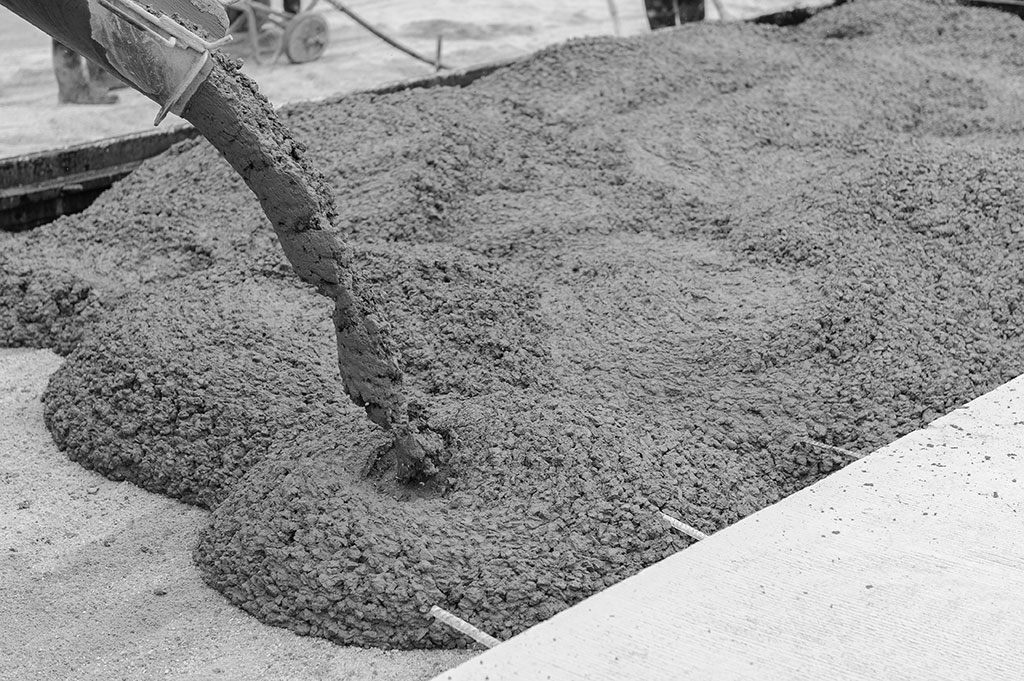Concrete is one of the world’s most common building materials, used to construct walls, roads and homes alike. But how is it made?
Mixtures of sand, gravel and Portland cement are combined together to form the material that will then be poured into molds to form any structure that needs to be created.
Mixing
Mix design is crucial to the ultimate properties of concrete. This involves finding an optimal ratio of portland cement (10-15%) to aggregate (65-75%), adding water, and any necessary additives – as well as working quickly enough to place and harden the concrete before it hardens completely.
Concrete’s hydration process is determined by the amount of water added to its mix. Reducing water usage may increase strength but reduce workability; to find an acceptable compromise use chemical admixtures like fly ash, ground granulated blast furnace slag and silica fume as chemical accelerators to speed up its hydration reaction – byproducts from other industrial processes that typically consist of fly ash, GGBFS or silica fume admixtures are usually added as speedbumps to accelerate hydration reactions faster.
Placement
Concrete is one of the most versatile and useful construction materials; it is strong, durable, fire-retardant, low maintenance costs and economical to own and use. Concrete’s primary ingredients are water, sand or fine aggregate (fine aggregate), gravel and cement.
These four ingredients are combined to form a semi-liquid slurry that can be easily poured and formed into any shape desired. Concrete’s strength comes from chemical reactions between its binder (typically Portland cement) and aggregate. There are various kinds of concrete depending on which combination is chosen based on binder type (usually Portland cement) and aggregate type used, and this also determines its type.
At a construction site, dry cement powder and stone aggregate are combined with water to form a mortar, then transported by pumping to their respective sites for placement. Concrete can be further strengthened using various chemical admixtures – air-entraining admixtures are an effective way of increasing slump without altering water-cement ratio, while crystalline admixtures decrease concrete permeability by creating insoluble needle-shaped crystals which fill capillaries and microcracks to block pathways for water and contaminants to enter through.
Pouring
Concrete is a composite substance composed of cement, aggregates (such as sand and gravel), water, and sometimes additives that is mixed and poured into place for use as foundations for buildings or other uses. Proper proportioning must take place so as to achieve the desired characteristics after it hardens when drying occurs.
Concrete house slabs Melbourne is a composite material comprised of aggregate (sand and gravel), water, and cement paste binders such as Portland cement paste. When mixed together with water it forms a flowable paste that can be easily placed into forms to build structures; once set it is strong and durable.
Once concrete has been poured, it must be leveled and smoothed to achieve maximum effectiveness. A piece of wood such as 2×4 can be used to “screed” it quickly level the surface before setting begins.
Once the concrete has been screeded, a tool known as a bull float is used to bring cream onto its surface and consolidate aggregate, facilitating proper curing. Sometimes other materials are added into the mix in order to achieve specific characteristics – for instance frozen-resistant or extra strength concrete mixes; such admixtures may increase fluidity of concrete production while speeding curing times up or changing their timing altogether, as well as improve tensile strength, flexibility or chemical resistance properties of concrete.
Finishing
Concrete is a flexible construction material, suitable for finishing surfaces for various uses. However, to produce optimal results with concrete construction requires proper preparation, skillsets, techniques and equipment.
Initial steps in finishing concrete include leveling it. This can be accomplished using either hand wood or metal screed boards or machines equipped with float blades to screed.
After the concrete is mixed, it must be floated with either a wooden or metal hand float or commercial float to smooth away imperfections, such as small bumps and voids in its surface, as well as to prepare it for troweling. Floatation also creates an anti-slip texture which makes sidewalks safer.
Finalizing this process involves cutting expansion joints to prevent cracking and shrinkage of concrete, with spaces no greater than 24 times wider than its width. Next is troweling to ensure an even surface for smooth troweling that increases strength; after which it can be finished off by brushing for slip resistant properties.
